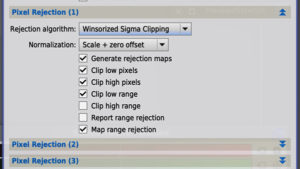Ryan Jones:
I think SpaceX get a bad rap for starlink because they are a single entity putting up lots of satellites. It seems that every single trail caught by astrophotographers is attributed to Starlink. The fact is that, yes they are putting up a lot of satellites to benefit the entire planet, but they are only joining the list of trail makers. Other satellites, meteors, the space station, airplanes..... the list goes on.
According to this article, SpaceX passed the 2500 satellite mark this May:
https://spaceflightnow.com/2022/05/13/spacex-passes-2500-satellites-launched-for-companys-starlink-network/Based on this data, there were about 5000 active satellites in Orbit in 2021:
https://www.statista.com/statistics/897719/number-of-active-satellites-by-year/Give the fact that quite some non-SpaceX satellites in orbit are on geostationary orbits (about 400 in 2015,
source, which was about a third of sats at that time), the likelihood is high that any observed LEO object is a Starlink satellite. Probability increasing.
At the moment it's only SpaceX but other companies have announced plans of super-constellations with numbers of satellites of the same order of magnitude.
Personally, I consider our night sky as part of nature like the rest of the universe and I prefer asking this question:
Our actions have an effect. What's the effect and is it worth it?
Regarding these super-constellations, my answer is: No. It's essentially littering space.
For AP: at the moment, math helps. For the future: I'm tentative to say that math helps but I wouldn't be on it that it fully solves all issues.
Besides: I am curios how many of you ever look up to the sky? If you do, then say good bye to the night sky because many moving objects in the sky will prevent you from focusing on the fixed objects as we tend to follow moving objects with our eyes.
That's my two cents about it.
BJörn

